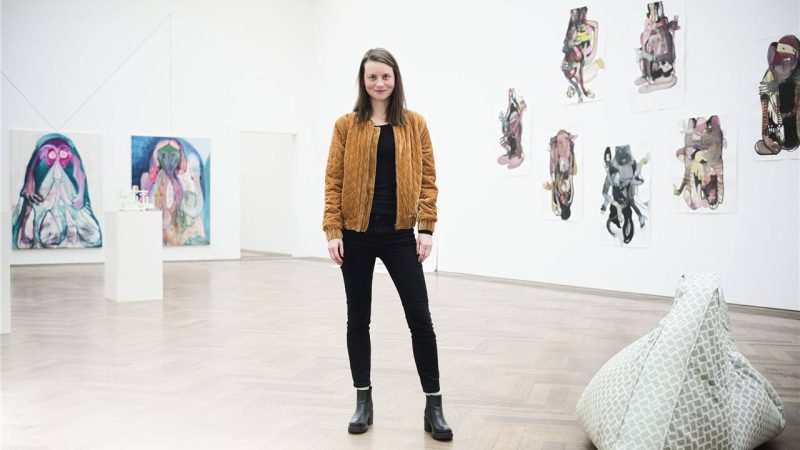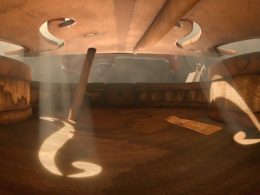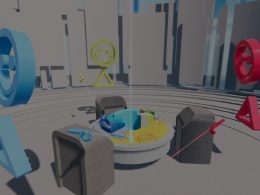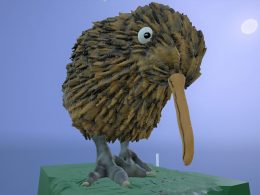Is a person real when only I see him? The dramaturge Sarah Buser questioned perception with her project "Body Buddies", which could be experienced at the Kunsthalle Basel: the avatars move around in the virtual exhibition space, which merges with the analogue world, show their different, personal references to the exhibited works and ponder about bodies and corporeality.
Sarah Buser holds a tablet in her hand. On the screen, a woman swims through the rooms of the Kunsthalle Basel. The woman's name is Fränzi and she explains to visitors how she personally interprets the works of art on display. Fränzi is only visible when the exhibition is viewed through the tablet on which the dramaturge Buser, together with Franziska Baumgartner and Camilla Franz from the Kunsthalle's mediation team, have installed an app. With the app, visitors view the real exhibition as if through a smartphone camera. The only difference is that there is an animated person on the screen who reports on his or her personal impressions of the exhibition.
Buser programmed the app herself. She holds the tablet at head height, her eyes fixed on the screen, and follows the virtual Fränzi through the room, her eyes shining as she talks about the possibilities of augmented reality, the technology that expands reality with virtual elements.
"The question then is: Is the floating woman really there now, when only I see her and react to her in the real world, or not?" It is such considerations that led Sarah Buser to learn programming and to realise theatre and projects with a focus on augmented reality. She wants to question reality and loves to circumvent the laws of physics.
"Everything is possible in programming. If Fränzi wants to swim through the Kunsthalle like in an aquarium, then I make it possible. The laws of physics and the conventions of the exhibition space are then beside the point."
Theatre as a space for negotiation
She developed the project in the Kunsthalle on request together with the mediation team there as a supplement to the Regionale exhibition "A Tooth for an Eye". In each room, the visitor encounters a different figure on the tablet who reports on his or her very personal approach to the exhibited works of art. The figures are designed in the image of different real people and move around the room as these people have wished.
The project offers the audience an additional experience to the classic exhibition. In the process, however, visitors cannot simply let themselves be sprinkled, but have to move actively in the space, follow the virtual figures and perceive both the real and the virtual space in the process. Each visitor determines his or her own pace and path through the space. This creates an individual experience for everyone. Buser is well aware that this compulsion to act can also result in excessive demands.
This aspect also interests her in her theatre productions. As a dramaturge, she wants to discuss the limits of the classical concept of theatre and include the questions of digitalisation. In her plays, the actors do not play the main role alone. Technology and environment influence the overall experience equally. Much else about her work does not fit under the classic label of "theatre" either.
"All people know about theatre is this: I go into a dark room and I have to turn off my smartphone. In my plays, they have to move and they get a smartphone in their hand," Buser says.
Through the individual task that each visitor receives, the events no longer remain merely symbolic, i.e. the representation of another world on a stage, but are negotiated directly between the visitors and their environment. "In this way, I can expand the theatre with augmented reality," says Buser.
Unfortunately, the exhibition is already over.
Source: aargauerzeitung








